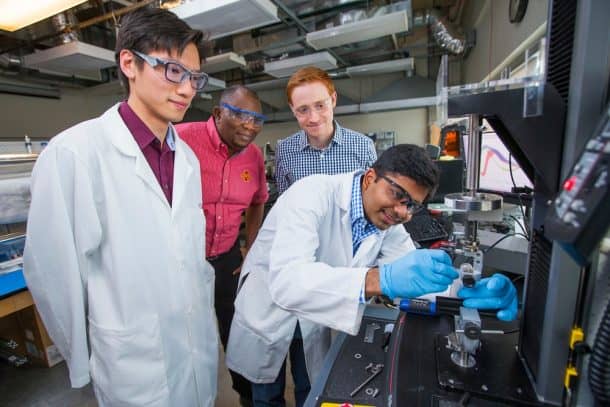Rubber and metal are usually lying on the opposite ends of the stiffness spectrum. However, a material developed at the Iowa State University, which is a combination of both metal and rubber, can switch from flexibility to stiffness when bent, twisted or squeezed. For the development of the material, the team built on work in ‘undercooling’. It is a technique that allows a metal to stay in liquid state when the temperatures are far cooler at which they metal usually solidify.
Some Iowa State researchers conducted their research previously on the stuff which is a heat-free alternative to soldering. In the latest research, the team exposed the droplets of the melted metal to oxygen and created an oxidized shell around it. This keeps the metal in a liquid form. The tiny bubbles of the undercooled metals are then mixed into an elastomer material. When the rubber is bent, twisted or squeezed, the bubbles embedded inside the rubber break open. The liquid metal in the form of bubbles flows out and fuses together, this hardens to form a kind of metal mesh inside the rubber. In the lab tests, the researchers found that the material can stiff up to 300% and can allow supporting up to 50 times of its own weight.

Michael Barlett, co-lead author of the study said, “A device with this material can flex up to a certain amount of load. But if you continue stressing it, the elastomer will stiffen and stop or slow down these forces.” This technique works only one way. Once the material gets metallic and hard, there is no going back to the rubbery state. Other stress-induced stiffness-switching materials are not so permanent. For example, the material developed at the University of Michigan which used a unique surface geometry of struts and hinges.
The stiffness might not be reversible, however, this material will still have a lot of applications. The researchers are saying that it can be used to protect vital sensors or components of soft robots and wearable technology. It can also be used to support the delicate tissues in biological uses. To make sure that the rubber doesn’t turn into metal all of a sudden, the researchers say that the material can be modified to withstand a certain amount of stress. It hardens only when that level of stress is crossed. This can be done by changing the metal inside the material. They are currently using bismuth, indium and tin alloy particles of different sizes to change the soft material surrounding it.


